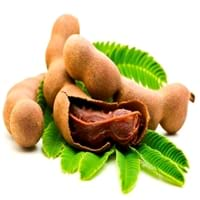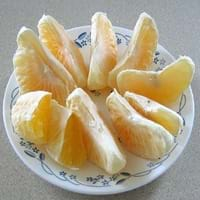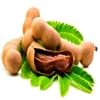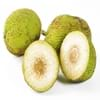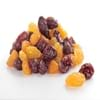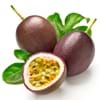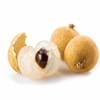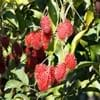Health Benefits
Boosts immune system, Boosts respiratory health, Cancer prevention, Digestive aid, Piles treatment
Increases metabolic rate, Lower blood pressure, Protects against kidney stone formation
General Benefits
Beneficial in improving nerve function, Protects against parasites and worms, Relieves pain
Gives you energy
Skin Benefits
Anti-aging benefits, Brightens and lightens complexion, Exfoliates skin, Hydrates skin, Treatment of dark spots
Skin cleansing
Hair Benefits
Prevents hair loss
NA
Allergy Symptoms
Abdominal pains, Breathing difficulty, Dizziness, Eczema, Fainting, Hives, Itching, Nasal congestion, Swelling of face, Tingling sensation in mouth, Vomiting
NA
Side Effects
Decrease in blood sugar levels, Induces acid reflux, Allergic reaction, Tooth decay, May form gallstones
Affects blood glucose levels, Decrease in blood sugar levels, Coagulation
Best Time to Eat
Along with meal, As a snack in the late afternoon, Don't consume at night and before bed, Strictly avoid empty stomach
As a snack in the late afternoon, Eat the fresh ones, avoid mixing with any other foods, don't eat after meal., Morning time (before lunch)
Vitamin A (Retinol)
Not Available
Vitamin B1 (Thiamin)
Not Available
Vitamin B2 (Riboflavin)
Not Available
Vitamin B3 (Niacin)
Not Available
Vitamin B5 (Pantothenic Acid)
Not Available
Vitamin B6 (Pyridoxin)
Not Available
Vitamin B9 (Folic acid)
Not Available
Vitamin C (Ascorbic Acid)
Vitamin E (Tocopherole)
Not Available
Vitamin K (Phyllochinone)
Not Available
Lutein+Zeaxanthin
Not Available
Phytosterol
Not Available
Water Content
Not Available
Calories in Fresh Fruit with Peel
Not Available
Calories in Fresh Fruit without Peel
Not Available
Calories in Frozen Form
Not Available
Calories in Dried Form
Not Available
Calories in Canned Form
Not Available
Not Available
Calories in Pie
Not Available
Season
Spring, Summer
Dry
Varieties
PKM 1, Urigam, Hasanur, Tumkur prathisthan, DTS 1 and Yogeshwari
NA
Color
Brown, Reddish-brown
Orange, Yellow
Inside Color
Brown
Creamy Yellow
Shape
Curving Cylinder
Round
Soil Type
Loam, Sandy, Sandy loam, Well-drained
Loamy
Climatic Conditions
Humid to dry, Rainfall, Warm to hot climate
Warm
Facts about
- Tamarind is used to prevent body odor.
- African children use the tamarind seeds in games.
- No cases of tamarind toxicity or allergy reported till date.
- The name is derived from the word "ugly" refering to the it's unpleasant appearance, with rough, wrinkled, greenish-yellow rind, wrapped loosely around the orange pulpy citrus inside.
Top Producer
India
Jamaica
Other Countries
Africa, Australia, Brazil, China, Mexico, Nigeria, Sudan, Taiwan
NA, United States of America
Top Importer
United States of America
Europe
Top Exporter
Thailand
Jamaica
Botanical Name
Tamarindus indica
Citrus reticulata × Citrus paradisi
Synonym
Tamarindo, tamarindus
Tangelo, citrus tangelo
Subkingdom
Tracheobionta
Tracheobionta
Division
Magnoliophyta
NA
Species
Tamarindus indica
C. reticulata × paradisi
Generic Group
Tamarind Sub
Citrus fruit
Difference Between Tamarind and Ugli fruit
We might think that Tamarind and Ugli fruit are similar with respect to nutritional value and health benefits. But the nutrient content of both fruits is different. Tamarind and Ugli fruit Facts such as their taste, shape, color, and size are also distinct. The difference between Tamarind and Ugli fruit is explained here.
The amount of calories in 100 gm of fresh Tamarind and Ugli fruit with peel is Not Available and 45.00 kcal and the amount of calories without peel is 239.00 kcal and Not Available respectively. Thus, Tamarind and Ugli fruit belong to High Calorie Fruits and Low Calorie Fruits category.These fruits might or might not differ with respect to their scientific classification. The order of Tamarind and Ugli fruit is Fabales and Sapindales respectively. Tamarind belongs to Fabaceae family and Ugli fruit belongs to Rutaceae family. Tamarind belongs to Tamarindus genus of Tamarindus indica species and Ugli fruit belongs to Citrus genus of C. reticulata × paradisi species. Beings plants, both fruits belong to Plantae Kingdom.
